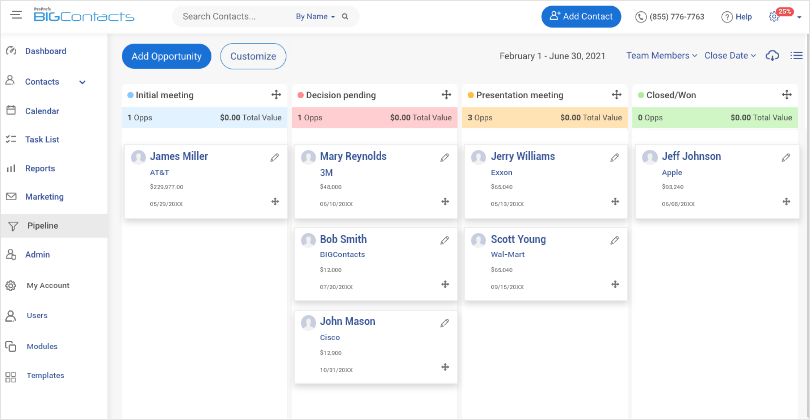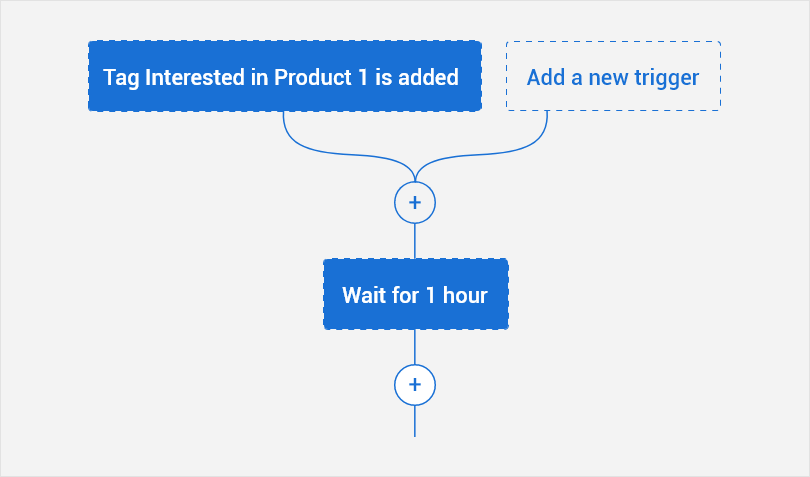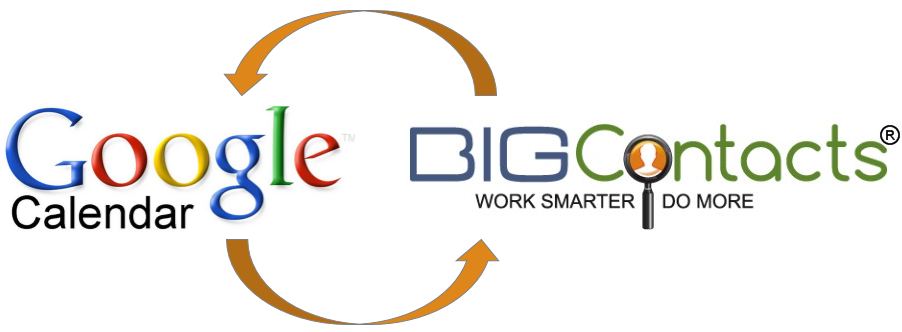
Imagine you could literally peek into the minds of your customers and prospects!
What if you could see what they think and feel when interacting with your business? How would that change the way you market, sell, and serve them?
This extraordinary power lies within your reach, thanks to CRM metrics.
These metrics are the crucial data points that show how effective your marketing, sales, and customer support efforts are in generating and closing deals, retaining customers, and increasing revenue.
But not all CRM metrics are created equal.
Some are more important and relevant than others. And some are easier to track and analyze than others.
In this blog post, we show you the 14 best CRM metrics for business success. We also explain what they are, why they matter, and how to track them using the best CRM software tools.
In a Nutshell
- CRM metrics are quantifiable data points used to evaluate customer relationship management efforts. They provide insights into the effectiveness of sales, marketing, and support activities.
- Implementing CRM metrics brings numerous benefits, such as improved decision-making, enhanced customer satisfaction, and increased revenue.
- Standard CRM metrics examples include close rate, customer lifetime value, customer acquisition cost, net promoter score, churn rate, the average time to resolution, and customer satisfaction rate.
- You need to set SMART goals, assign key performance indicators, use CRM software tools, and create reports and dashboards to track CRM metrics.
What Are CRM Metrics?
CRM metrics are key data points that provide insights into the performance and outcomes of customer relationship management (CRM) strategies and activities. These metrics clearly measure various aspects of the customer journey, such as customer acquisition, retention, satisfaction, and overall engagement.
By analyzing CRM metrics, you can gauge the effectiveness of your relationship management efforts, identify areas for improvement, and make data-driven decisions to drive organizational success.
For example, you can use the retention rate metric to assess customer retention. By incorporating it into a quarterly report, you can analyze trends and patterns of customer loyalty over time.
Integrating this metric into your CRM system ensures real-time monitoring of changes, allowing you to stay updated on customer retention performance and make timely adjustments to enhance loyalty and satisfaction.
Let’s now explore various CRM metrics in the subsequent sections.
6 CRM Metrics for Sales Effectiveness
Some CRM metrics that can work as powerful indicators of sales effectiveness are listed below.
Sales Cycle Length:
It’s about how long it takes to close a deal from the first contact to the final purchase. This metric shows how efficient and fast your sales process is.
A short sales cycle length means you are moving your leads through the pipeline quickly and closing deals faster. A long sales cycle length means you may need to streamline the stages of your sales, overcome objections, or provide more value to your prospects.
❓Did You Know
The average sales cycle length for B2B companies is around 102 days.
Conversion Rate:
Conversion rate is the percentage of leads who become customers after going through your sales process. It shows how well you move your leads through the sales funnel and persuade them to buy from you.
A high conversion rate means you are providing a smooth and satisfying customer journey and addressing their pain points and objections. A low conversion rate means you may need to improve your lead nurturing, follow-up, or closing skills.
Conversion rate = (Number of customers / Number of leads) x 100
Here’s the average conversion rate for various industries that can serve as benchmarks for your business:
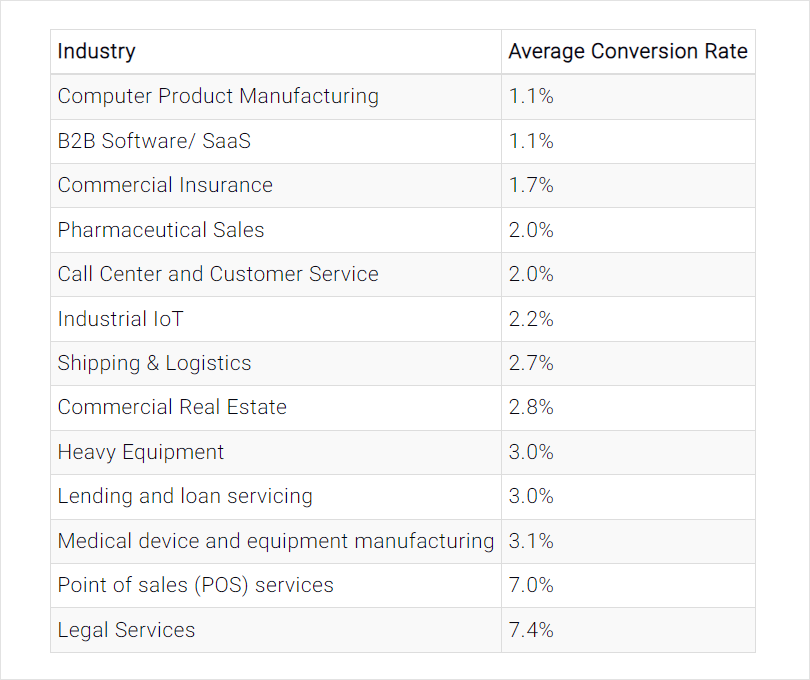
Customer Lifetime Value (CLV):
Lifetime value indicates a customer’s total revenue over their relationship with you. This metric shows how much value you create for your customers and how loyal they are to your business.
A high CLV means you are providing a great customer experience and upselling or cross-selling effectively. A low CLV means you may need to improve your customer retention, satisfaction, or loyalty strategies.
CLV = (Average purchase value x Average purchase frequency) x Average customer lifespan
Customer Acquisition Cost (CAC):
CAC calculates the total cost incurred by a business to acquire a new customer. It includes expenses related to marketing campaigns, advertising, sales personnel, and other activities aimed at acquiring customers.
By dividing the total acquisition costs by the number of new customers, you can know the effectiveness of your acquisition strategies. Lowering CAC is essential for optimizing profitability and ensuring a healthy ROI.
CAC = (Total marketing and sales costs / Number of new customers)
Net Promoter Score (NPS):
NPS, or Net Promoter Score, is a widely used metric that measures customer loyalty and satisfaction. It involves a simple question: “On a scale of 0-10, how likely are you to recommend our product/service to others?” Based on responses, customers are categorized as promoters, passives, or detractors, providing businesses insight.
A high NPS means you have a lot of promoters who love your brand and spread positive word-of-mouth. A low NPS means you have a lot of detractors who are unhappy with your brand and may damage your reputation.
NPS = (Percentage of promoters – Percentage of detractors) x 100
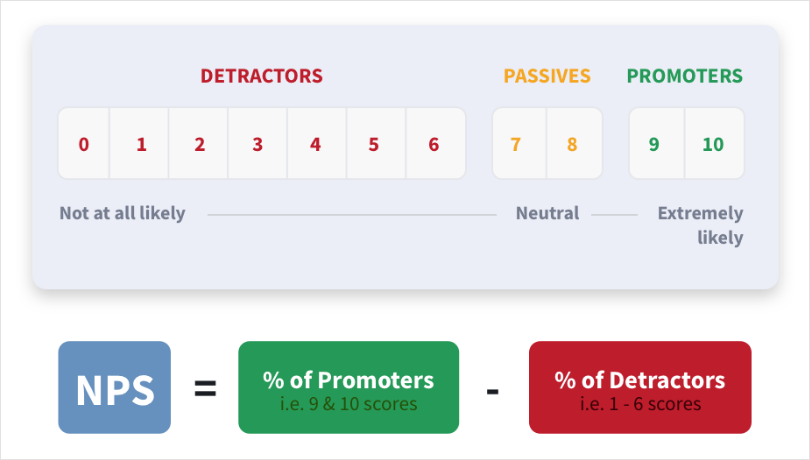
Churn Rate:
The churn rate is the percentage of customers who stop doing business with you over a given period. It reflects the loss of sales revenue resulting from customer attrition.
Monitoring and analyzing churn rates help sales teams identify potential issues, such as product dissatisfaction or competition, allowing them to take proactive measures to retain customers, increase sales, and improve overall performance.
Churn rate = (Number of customers lost / Number of customers at the start) x 100
3 Essential CRM Metrics for Measuring Marketing Effectiveness
Following are key metrics for measuring and enhancing your marketing performance.
Lead Generation Rate:
This is the percentage of visitors who become leads after interacting with your marketing content. This metric shows how well you capture your target audience’s attention and interest and generate qualified leads.
A high lead generation rate means you are delivering relevant and valuable content to your visitors. A low lead generation rate means you may need to improve your content quality, landing page design, or call-to-action.
Lead generation rate = (Number of leads / Number of visitors) x 100
Revenue Generated by Campaign:
The revenue generated by a campaign is a vital marketing metric that measures the financial impact of a specific marketing initiative. It quantifies the amount of money generated directly from the campaign, providing insights into its effectiveness and return on investment.
This metric helps marketers evaluate the campaign’s impact on sales, customer acquisition, and overall revenue growth. Marketers can make data-driven decisions by analyzing the revenue generated, optimizing future campaigns, allocating resources more effectively, and ultimately driving business growth and profitability.
Revenue generated by campaign = (Number of sales from campaign x Average sale value) – Campaign cost
Email List Growth Rate:
A change in your email list size over a given period shows how well you are building and maintaining your email list, which is a valuable asset for marketing and communication.
A high email list growth rate means you generate more leads and subscribers interested in your brand and content. A low email list growth rate means you may need to improve your lead generation, opt-in, or retention strategies.
Email list growth rate = ((Number of new subscribers – Number of unsubscribers) / Number of original subscribers) x 100
5 CRM Metrics for Customer Support Success
Here are the 5 most crucial CRM metrics that can demonstrate the effectiveness of your customer support operations.
Average Time to Resolution:
The average time it takes to resolve a customer issue or request from the first contact to the final solution shows how efficient your customer support team is.
A lower average time to resolution suggests quicker and more satisfactory customer service, leading to improved customer satisfaction. Monitoring this metric helps identify areas for improvement, optimize support processes, and ensure the timely resolution of customer issues.
Average time to resolution = (Sum of all resolution times / Number of resolved issues)
Follow-Ups Per Ticket:
This is the average number of interactions or contacts required to resolve a customer issue or request. This metric shows how complex and difficult your customer issues are and how well your customer support team handles them.
A low average number of follow-ups per ticket means you are resolving customer issues with minimal back-and-forth and hassle. A high average number of follow-ups per ticket means you may need to improve your problem-solving, communication, or escalation skills.
Average number of follow-ups per ticket = (Sum of all follow-ups / Number of resolved issues)
First Contact Resolution Rate:
This metric demonstrates the percentage of customer issues or requests resolved on the first contact or interaction. It shows how effective and satisfactory your customer support service is.
A high first-contact resolution rate means you are providing a positive and convenient customer experience and reducing the need for further contacts or follow-ups. A low first contact resolution rate means you may need to improve your support quality, knowledge, or tools.
First contact resolution rate = (Number of issues resolved on first contact / Number of resolved issues) x 100
Customer Satisfaction Score (CSAT):
CSAT provides insights into how well customer support meets customer expectations. Monitoring this metric over time allows you to track trends, identify patterns, and make data-driven decisions to enhance customer satisfaction.
You can send CSAT surveys after a support interaction or at regular intervals. They help identify areas where the company’s support is excelling or falling short, enabling you to take corrective actions and improve the overall support experience.
CSAT = (Number of satisfied customers / Total survey responses) * 100
Customer Effort Score (CES):
CES aims to minimize customer effort and streamline the support experience. By measuring CES, organizations can identify pain points, bottlenecks, and areas where customers face unnecessary challenges.
The lower the CES score, the better, as it indicates that support interactions are seamless, efficient, and require minimal effort from the customer. Addressing high CES scores can improve customer loyalty, reduce churn, and increase customer satisfaction.
CES = (Total sum of effort scores / Total number of respondents)
Understanding the Mechanics: How These CRM Metrics Work
So now we know different CRM metrics, but how do they work? It’s time to delve into this.
The wealth of information stored in your CRM system is the foundation for generating and monitoring essential CRM performance metrics. These metrics leverage CRM systems to collect, analyze, and interpret customer interactions and business activity data.
Here is a detailed description of how CRM metrics work –
Data Collection:
CRM software automatically tracks and captures data from various touchpoints, including customer interactions, sales transactions, marketing campaigns, and customer support activities. Team members can also manually input relevant data into the CRM system.
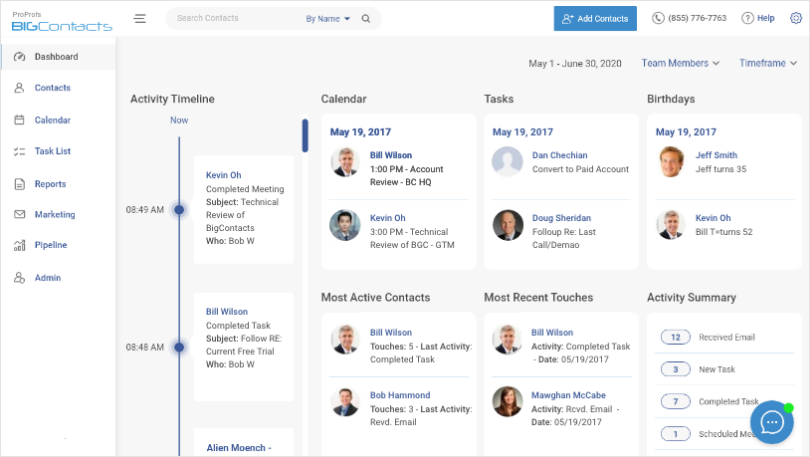
Metric Calculation:
Based on the collected data, CRM systems calculate specific metrics essential for evaluating performance and measuring outcomes. These metrics can range from customer acquisition and retention rates to conversion rates, customer satisfaction scores, and revenue growth.
Reporting & Analysis:
Data is analyzed to gain insights into customer behavior, sales performance, marketing effectiveness, and overall business success. Reports and dashboards visually represent these data summarizing key metrics to facilitate data-driven decision-making.
Performance Evaluation:
With CRM performance evaluation, you can assess the effectiveness of your strategies and initiatives. Metrics highlight areas of improvement and identify patterns or trends that impact customer relationships, sales productivity, and customer satisfaction.
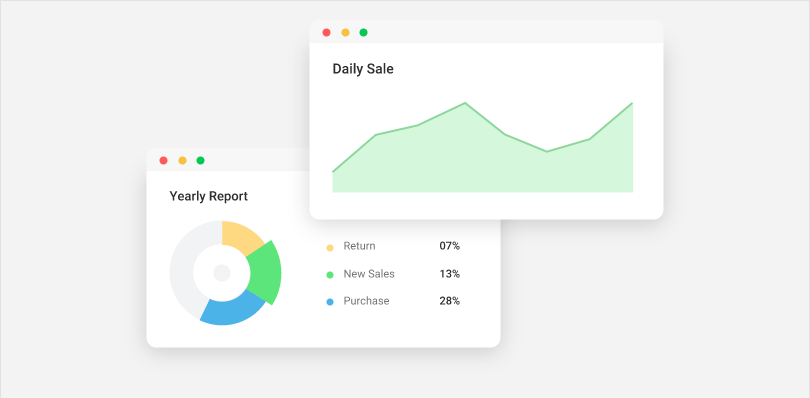
Actionable Insights:
The insights from CRM metrics enable businesses to make informed decisions to enhance customer relationships, optimize sales and marketing strategies, improve customer service, and drive business growth.
Benefits of CRM Metrics
Customer relationship management metrics are crucial because they help quantify and analyze the data gathered from customer interactions. By tracking CRM metrics, you can –
- Measure the overall performance of your marketing, sales, and customer service efforts.
- Predict future revenue based on the conversion rate and value of leads.
- Identify high-ticket opportunities and focus on the most profitable customers.
- Improve customer satisfaction and loyalty by understanding their needs and preferences.
- Reduce customer churn and increase retention by providing better service and support.
- Optimize the sales pipeline by knowing which stages need more attention and improvement.
- Monitor staff performance, and provide feedback and coaching to improve their skills.
How to Choose the Right CRM Metrics for Your Business Goals
Different CRM metrics can align with specific business goals and objectives, enabling companies to track progress and make data-driven decisions. Here’s a framework for selecting relevant and impactful CRM metrics:
Identify Business Goals:
Refine your primary objectives by strategically identifying key areas of focus, such as increasing revenue, reducing cost, elevating customer satisfaction, or expanding market dominance. For instance, when determining CRM metrics for a small business, envision the ultimate objective, such as maximizing profitability.
Analyze Key Drivers:
Identify the key factors that drive the achievement of your business goals. For revenue growth, it could be lead conversion rate, average deal size, or customer lifetime value. For cost reduction, metrics like customer acquisition cost or support resolution time are crucial.
Assess Data Availability:
Evaluate the availability and quality of data required to measure the identified metrics. Ensure access to necessary data and track them within your CRM system. Keep your CRM data clean with regular audits and updates.
Prioritize Impactful Metrics:
Prioritize metrics that directly impact your business goals and objectives. Choose metrics that provide actionable insights and allow you to monitor progress toward achieving your desired outcomes.
Customize CRM Reports:
Leverage a robust CRM tool like BIGContacts to customize reports and dashboards based on your specific business needs. Tailor the reporting capabilities to track the selected CRM metrics, allowing you to monitor performance and make informed decisions.
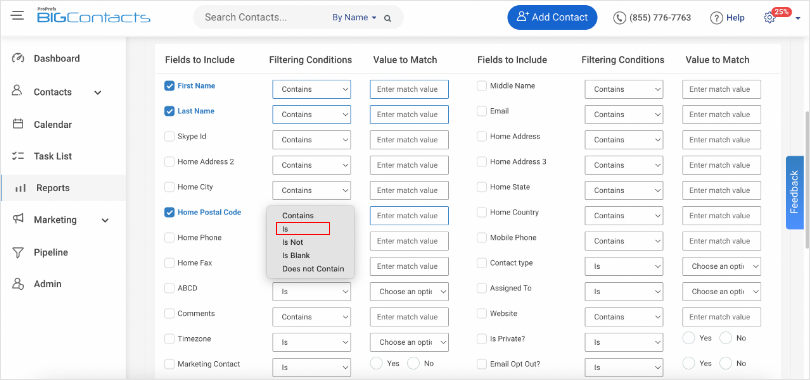
Remember, the selection of CRM metrics should align with your unique business goals and the specific outcomes you wish to achieve.
How to Set up CRM Metrics in Your Software
A powerful CRM system will make monitoring and reporting on the most influential metrics easy. To set up the metrics of your interest in your CRM software, you must –
Map Your Customer Journey:
Identify the stages and touchpoints your customers go through, from awareness to conversion, and align them with your business and sales goals.
Define Your Business Processes:
Establish the workflows and tasks your teams need to perform at each stage of the customer journey and assign roles and responsibilities accordingly.
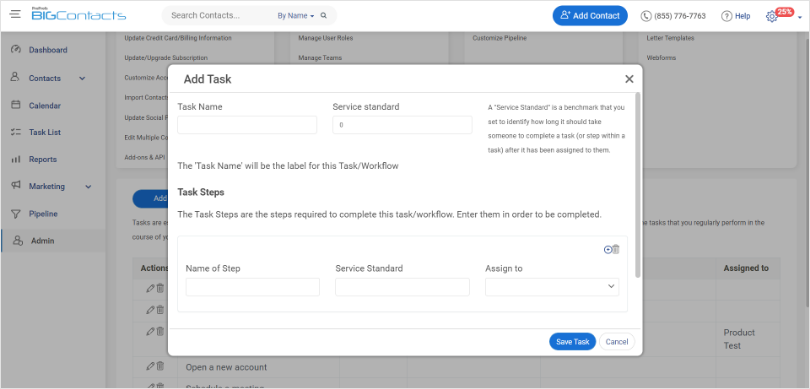
Create Custom Fields, Stages & Pipelines:
Customize your CRM software to capture and display relevant data to your business and sales processes, such as contact information, deal value, lead source, etc. You can also create multiple pipelines for different types of deals or customers.
Migrate Your Customer Information:
Import your existing customer data from other sources, such as spreadsheets, emails, or other software tools, into your CRM software. Make sure to clean and update your data before and after the migration to ensure accuracy and consistency.
Integrate Other Tools:
Connect your CRM software with other tools you use for marketing, sales, and customer service, such as email, social media, chat, phone, etc. This will help you streamline communication and data sharing across platforms.
Automate Manual Tasks:
You can also use automation features to trigger actions based on certain criteria or events, such as sending email campaigns, creating tasks, updating records, etc.
Use Reports & Dashboards:
Generate detailed reports and dashboards to visualize and analyze your CRM metrics and gain insights into your business performance and customer behavior.
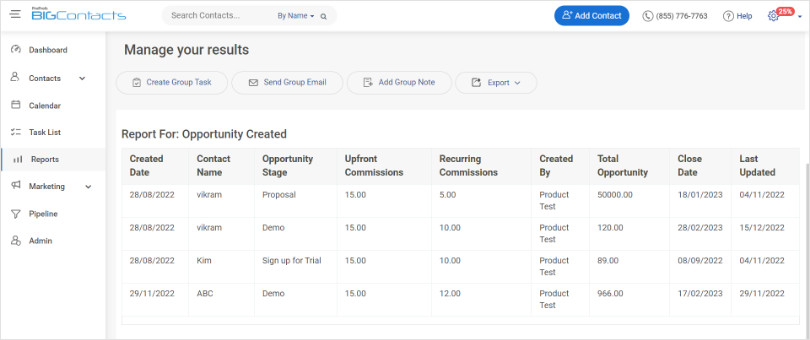
Read More: From Data to Insights: How CRM Reporting Drives Revenue Growth
Set User Permissions:
Invite your team members to use your CRM software and assign them different levels of access and visibility based on their roles and responsibilities. You can also create groups or teams to facilitate collaboration and reporting.
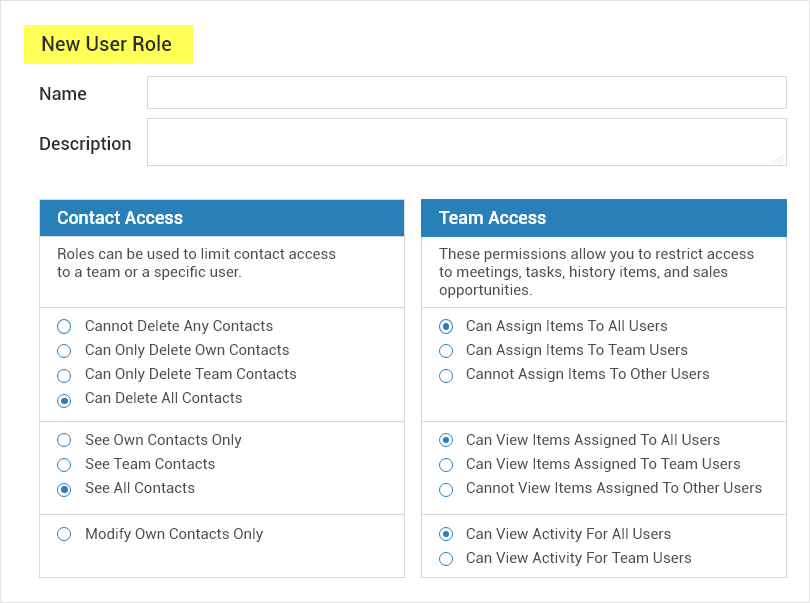
Unlock the Power of Your CRM Data
CRM metrics provide a quantitative framework for evaluating and improving customer relationship management efforts, helping you better understand and meet customer needs while achieving your organizational goals.
To maximize the value of your CRM metrics, you need to leverage a comprehensive platform that facilitates informed decision-making, enhances customer relationships, and drives sustainable growth.
With a dynamic tool like BIGContacts, you can simplify the data tracking and reporting process. Use it to customize reports, track the metrics that matter most to your goals, and gain real-time visibility into key performance indicators.
Experience the power of BIGContacts by signing up for a free trial. Discover how this robust CRM solution can revolutionize your approach to customer management and unlock a world of data-driven success.
Frequently Asked Questions (FAQ’s)
How Do I Create SMART Goals for My CRM Metrics?
To create SMART goals for your CRM metrics, follow these steps:
- Specific: Define what you want to achieve, such as increasing the lead conversion rate.
- Measurable: Determine how you measure progress, such as a percentage increase.
- Achievable: Set realistic goals based on available resources and capabilities.
- Relevant: Align your goals with broader business objectives and CRM strategy.
- Time-bound: Set a specific timeframe for achieving the goal, like increasing the conversion rate by 15% within six months.
How to Measure CRM Effectiveness?
To measure CRM effectiveness, assess key performance indicators (KPIs) like customer acquisition cost, customer lifetime value, conversion rate, and customer satisfaction score. Analyze data to evaluate sales performance, customer interactions, and revenue growth.
Conduct regular reviews of CRM metrics, track trends over time, and compare against industry benchmarks. Additionally, collect feedback through customer surveys or feedback channels to gain insights into the overall effectiveness of CRM strategies and identify areas for improvement.
How Often Should I Track CRM Metrics?
The frequency of tracking CRM metrics depends on your business needs and goals. It is recommended to track them regularly, such as monthly, quarterly, or annually. However, critical metrics like sales performance or customer satisfaction may benefit from more frequent monitoring.
Assess your business requirements, data availability, and the pace of changes in your industry to determine the appropriate tracking frequency.
What Should I Do If My CRM Metrics Indicate High Customer Churn?
If your CRM metrics indicate high customer churn, take the following steps:
- Dive into the metrics to identify patterns, customer segments, or specific touchpoints leading to churn.
- Determine the root causes behind customer churn by analyzing feedback, conducting surveys, or reaching out to churned customers directly.
- Implement corrective actions to address the identified issues. Improve customer experience, offer personalized solutions, or enhance product/service offerings.
- Develop targeted campaigns to re-engage at-risk customers. Offer incentives, loyalty programs, or exclusive benefits to encourage them to stay.
- Regularly track churn metrics to assess the impact of your actions. Adjust strategies as needed and refine your approach to reduce churn over time.
FREE. All Features. FOREVER!
Try our Forever FREE account with all premium features!

